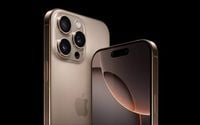Apple continues to innovate in the mobile video space with its latest device, the iPhone 16 Pro Max, which is gaining acclaim as a powerful tool for filmmakers. Featuring a triple camera setup, this smartphone is proving to be more than just a device for social media influencers; it’s becoming a legitimate filmmaking tool.
The Mumbai Academy of the Moving Image (MAMI) has recognized the iPhone 16 Pro Max's potential by incorporating it into their project, MAMI Select: Shot on iPhone. Esteemed directors such as Konkona Sen Sharma, Vikramaditya Motwane, Lijo Jose Pellissery, and Vetri Maaran are mentoring young creators in the art of filmmaking using this device. Participants are tasked with creating short films using only the iPhone 16 Pro Max, along with a few essential accessories, eschewing traditional cameras, tripods, and boom microphones. This minimalist approach encourages maximum creativity.
The first project from this initiative, titled “Seeing Red,” is a comedy horror film directed by Shalini Vijayakumar. It showcases the iPhone’s capabilities with features like a 120 mm lens, the ability to record in 4K at 120 frames per second, and a 5x optical zoom. These features demonstrate how the iPhone can handle demanding shots, including slow-motion scenes and precise framing from a distance.
Amrita Bagchi’s psychological thriller, “Tinctoria,” is another project that utilized the iPhone 16 Pro Max. This film draws inspiration from the historical Indigo Revolt of 1859 and employs the Cinematic Mode and object tracking to enhance the tension and dynamism of the narrative. Bagchi referred to the iPhone 16 Pro Max as a “rocket,” emphasizing its ability to deliver quality footage even under tight deadlines. She also highlighted the seamless post-production experience on her MacBook Pro, which allowed her to edit the pacing and rhythm of the film effectively.
In addition to these projects, Rohin Raveendrana Nair’s “Kovarty” and Chanakya Vyasa’s “Mangya” were also filmed entirely on the iPhone 16 Pro Max. These projects collectively reinforce the idea that today’s smartphones can compete with expensive cameras, making filmmaking more accessible and portable than ever before.
Meanwhile, the iPhone 16 Pro Max is also being praised for its Camera Control feature, which has garnered attention for its unique applications. A tech journalist, Roland Moore-Colyer, shared an unexpected use for this feature: capturing images of the back of his head for health reasons. At 38 years old, he found it challenging to photograph the back of his head without a physical shutter button. The Camera Control feature allowed him to achieve better framing and speed when taking these photos, which he described as a transformative experience.
Moore-Colyer noted that the difficulty of taking such pictures without a physical shutter button often leads to frustration. However, with the Camera Control, he was able to snap semi-useful shots and videos quickly. This newfound ability has prompted him to use the Camera Control button more frequently during his travels, indicating a growing appreciation for the feature.
Despite his initial skepticism about the Camera Control feature, he acknowledges its potential for improving the photography experience. He expressed hope that Apple will continue to develop this feature further, particularly with the anticipated iPhone 17. He encourages readers to share their experiences with the Camera Control feature, fostering a dialogue about its effectiveness.
As Apple pushes the boundaries of what smartphones can achieve, the iPhone 16 Pro Max stands at the forefront of this evolution, enabling both amateur and professional filmmakers to explore new creative horizons. With its impressive camera capabilities and innovative features, it’s clear that the future of filmmaking may very well fit in your pocket.


